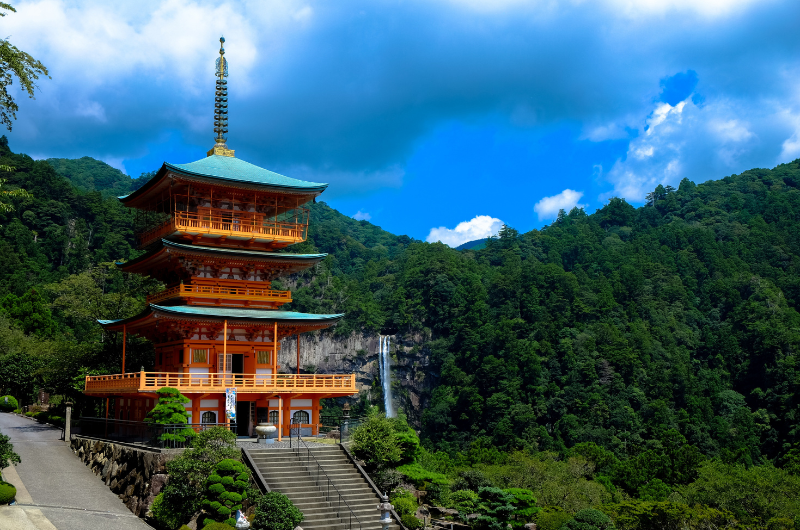The Magic of Japanese Temples and Shrines: Places Where Spiritual Traditions Come Alive

Source: Canva
What makes Japan so unique? Its temples and shrines! These are not just beautiful structures, but places where you can feel serenity, understand traditions, and admire art that has stood the test of centuries. Read our article to discover must-visit locations!
Visiting Japan without exploring its temples and shrines? That would be a shame! These sites are more than historical landmarks—they are living legacies of tradition, culture, and spirituality that have shaped Japan for thousands of years. Whether you’re an architecture enthusiast, a history buff, or simply seeking peace in a hectic world, Japanese temples and shrines offer an unforgettable experience.
What is the Difference Between a Temple and a Shrine?
Before we explore specific sites, let’s clarify the basic distinction. Temples (tera in Japanese) are associated with Buddhism, while shrines (jinja) are connected to Shinto, Japan’s native religion. Both serve as places for spiritual reflection, but each has its unique features:
- Temples are recognized by bronze Buddha statues, fragrant incense smoke, and bells rung by worshippers before praying.
- Shrines are recognized by red torii gates, symbolizing the transition from the earthly world to the spiritual realm. People visit shrines to pray for luck, health, and protection from evil spirits.
Interesting fact: Japan boasts over 77,000 shrines and 85,000 temples, so finding one is no problem—they’re literally everywhere.
Which Famous Japanese Temples Should You Visit?
- Kinkaku-ji (Golden Pavilion), Kyoto
As the name suggests, the Golden Pavilion is covered in gold leaf and looks like something out of a fairy tale. Located by a pond, its reflection on the water creates a perfect photo opportunity. This Buddhist temple was originally a nobleman’s villa before being converted into a temple.
Interesting fact: In 1950, a young monk intentionally set the pavilion on fire. The current structure is a reconstruction from 1955.
- Tōdai-ji, Nara
Tōdai-ji is one of the most important Buddhist structures in Japan and is home to the giant statue of the Great Buddha (Daibutsu). It is one of the largest wooden temples in the world, and its grandeur will truly amaze you.
Interesting fact: The temple dates back to the 8th century, and its Great Buddha weighs over 500 tons.
- Sanjūsangendō, Kyoto
This temple is famous for its 1,001 statues of Kannon, the goddess of mercy. The statues are hand-carved, and each one is slightly different. You won’t be able to walk past them without slowing down and truly admiring them.
Interesting fact: The temple building is over 120 meters (394 ft) long and was designed to withstand earthquakes.
And Here Are Some Famous Japanese Shrines That Will Enchant You
- Fushimi Inari Taisha, Kyoto
This shrine is recognizable by the thousands of red torii gates that wind their way up to the top of Mount Inari. The site is dedicated to the goddess of rice and agriculture. If you walk at least part of this magical path, you’ll understand why it’s one of the most photographed places in Japan.
Interesting fact: Each gate is a gift from individuals or companies wishing to express gratitude for their successes.
- Meiji Shrine, Tokyo
This shrine, dedicated to Emperor Meiji and his wife, is surrounded by a vast forest right in the heart of busy Tokyo. It’s the perfect place to take a break from the city hustle and bustle.
Did you know? Over 3 million people visit here every New Year to ensure good fortune during hatsumode (the first shrine visit of the year).
- Itsukushima Shrine, Hiroshima
The “floating” torii gate of Itsukushima Shrine on Miyajima Island is one of Japan’s most famous symbols. During high tide, the gate appears to float on the water’s surface.
The shrine itself was built to “float” on the sea, as the island was considered sacred, and stepping on it was forbidden.
How to Fully Enjoy Your Visit?
Do you want to truly enjoy your visit to Japanese temples and shrines? Make sure to allocate enough time for each place. These sites are not just backdrops for a quick photo but spaces where you can discover details, explore the surroundings, and take a moment to pause. Sit down, absorb the atmosphere, and let the tranquility that emanates from these places affect you.
Don’t forget to respect local traditions. Before entering a temple or shrine, cleanse your hands and mouth at the stone water basin—this symbolic gesture prepares you for a spiritual experience. At Shinto shrines, bow slightly before praying and clap twice, which is the traditional way to call the attention of Shinto deities.
If possible, visit in the morning. The early hours offer not only fewer tourists but also a uniquely peaceful atmosphere, where the sun is just awakening, and the temples and shrines appear almost magical.
Tip: Get inspired by more unforgettable places that should not be missed on your journey through Japan on mappinternational.org.
Embark on a Journey of Spirituality
Whether you choose to visit the majestic Tōdaiji, walk through the red gates of Fushimi Inari, or simply absorb the silence at the Golden Pavilion, Japanese temples and shrines will undoubtedly offer you a profound experience.
